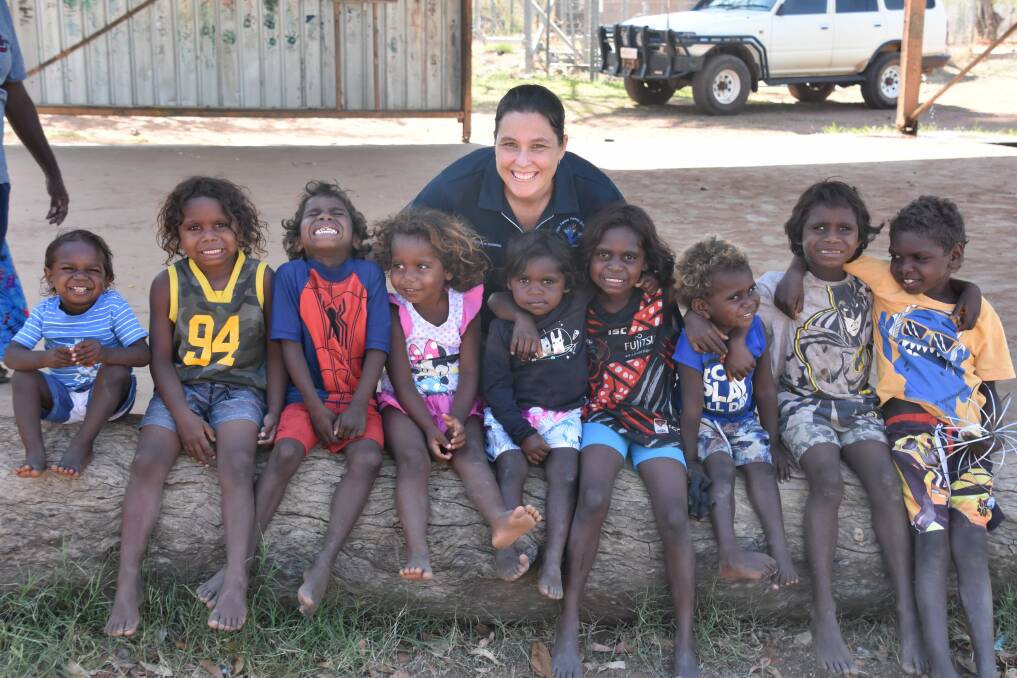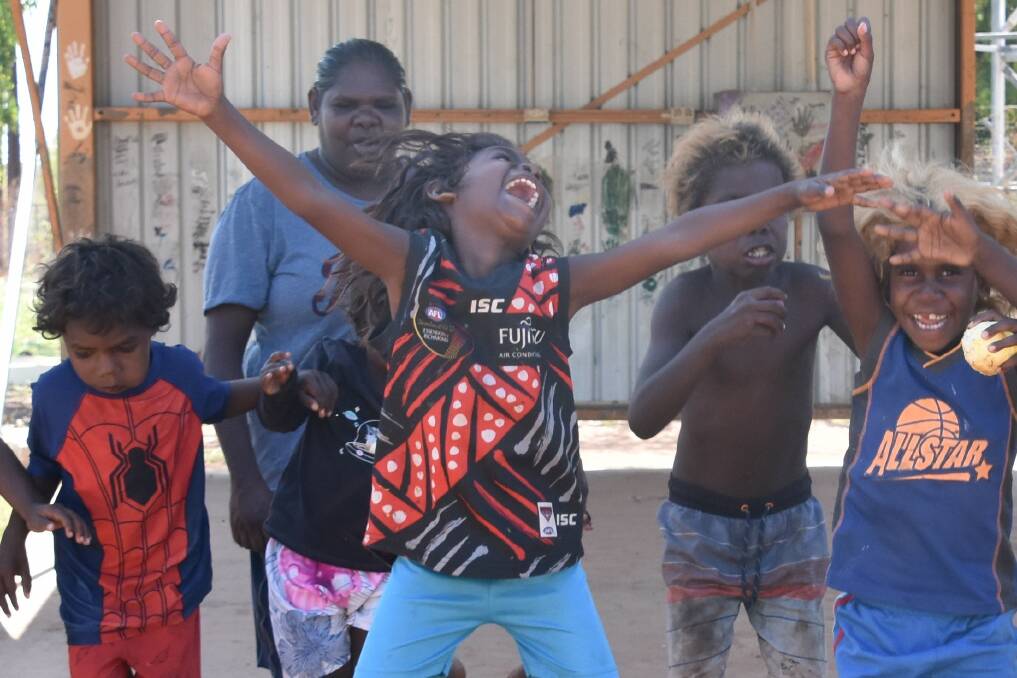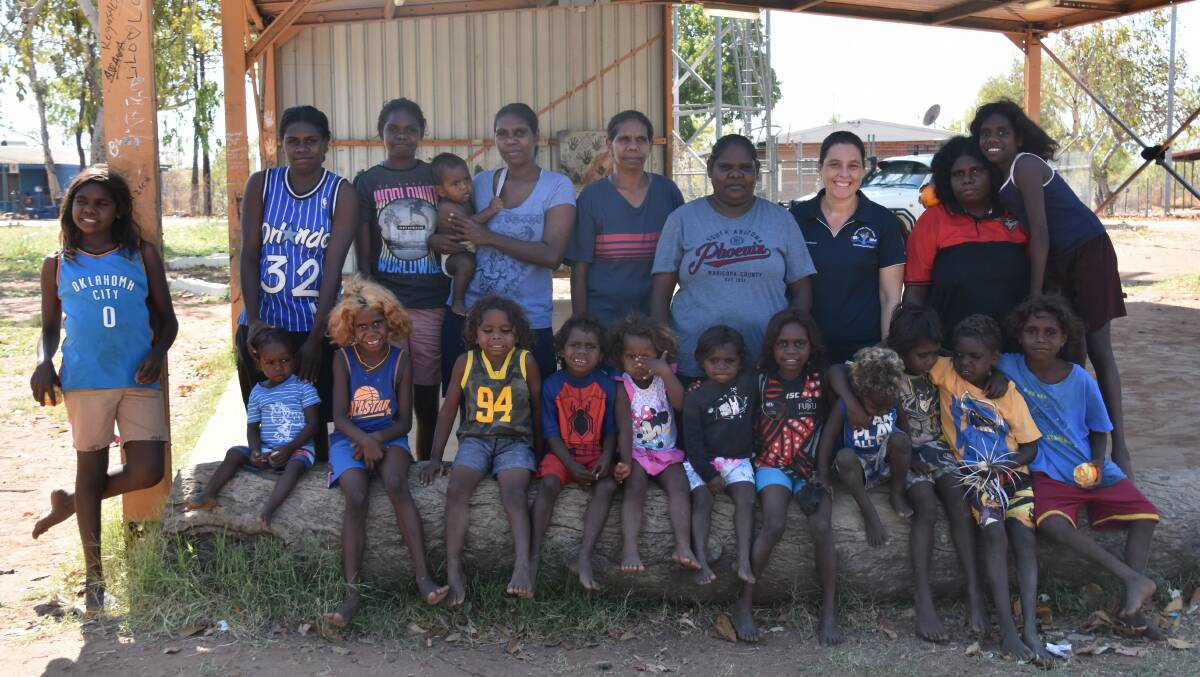Can’t come to preschool? No problems, we’ll bring it to you

Sponsored content for Clyde Fenton School.
Early education is fundamental to the social and academic development of children. However, despite a decade long effort by the federal government to close the gap between indigenous and non-indigenous Australians, many parents in remote communities still find it difficult to send their little ones to preschool.
A lot of families don’t have easy access to transport. They can’t afford a car and understandably don’t feel comfortable putting their four-year-old kids on a bus on their own for 20 minutes to get them into town.
That’s why Clyde Fenton School has partnered with Save The Children to come up with an innovative solution to this age old problem. Rather than expecting the parents to bring their youngsters to preschool, instead they’re taking the preschool to them.
From the beginning of next term, a mobile preschool and play group will be heading out to Binjari and Rockhole communities four days a week to help give the children the best possible shot at success when they start school.
As a life long educator, principal Jeff Parker knows all too well how important early education is for students. Not only does it allow them to pick up the basics, like numbers and the alphabet, it also teaches them far more fundamental skills.
“Even things like finer motor skills, the ability to share toys, the ability to sit on the mat and listen, the ability to know how to hold a book and which way to turn the pages. They all seem like basic things and we tend to take them for granted but the reality is you need to teach kids how to do them,” he explained.

“You can’t just expect them to know how to do that without it being modelled for them. These are all things you need to be able to do when you come to school and you can’t expect a child to know how to do it if they haven’t been to preschool,” Mr Parker continued.
Clyde Fenton School has a large indigenous population. In fact, about 75 per cent of it’s students are aboriginal. While this is a point of pride for the school it also places a greater burden upon them as educators.
The sad reality is that most of their students – by virtue of birth – are statistically more likely to fall behind in the areas health, education, mortality and life expectancy.
Early education will be key in closing the gap, that’s why the federal government set a target to have 95 per cent of indigenous four-year-olds enrolled in early childhood education by 2025. Nationwide, we currently have about 91 per cent.
However, Mr Parker says reaching those children in remote communities is going to be fundamental in fulfilling our obligations to both them and the next generation.
“There’s a lot of misinformation about the gap,” he explained.
“We find with our students that leave here when they’re in year six, they’ve made significant improvements in their reading, writing and mathematical skills but the problem is that they start from so far behind. The gap doesn’t close by the time they leave primary school.

“That’s why this initiative is so important. The sooner we start, the better chance we have of closing that gap…The average community kid we get that hasn’t been to preschool comes to us in grade one and their attendance tends to be pretty poor because it is all a little bit overwhelming for them...” he continued.
“(Language skills is another important issue,) by the time they get to year three, some of the kids have only ever had about eight months all up of being exposed to English on a daily basis... So, it’s critical that we get the kids involved in listening to and speaking English in an educational setting from a young age.”
Clyde Fenton School has a fairly good attendance rate among its indigenous students. Three out of four kids who can come to school do so every day. However, the 25 per cent that don’t tend not to due to difficulties with the learning environment and a lot of that stems from a lack of early education or engagement.
Mr Parker said some of the kids fall even further behind and get trapped in a vicious cycle of self-shaming and find it hard to catch back up. He believes more needs to be done to reach those children and he has plans for future programs to help them re-engage with education by sending teachers to them, with the end goal being a full transition back to the classroom. The ability to do that however is largely dependent upon the success of the preschool pilot.
The initiative is something the staff and school administration have long wanted to trial. For a period of time, they ran a free bus service out to the communities to help ferry kids in but it ultimately proved economically nonviable.
However, with the support of Save The Children and the dedication of the school to find the funding in its budget, they hope the program will prove successful.
Sponsored content for Clyde Fenton School.


